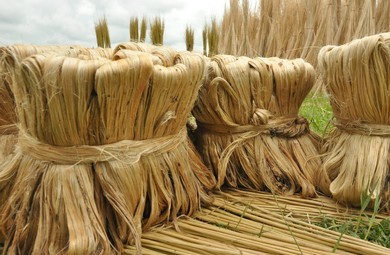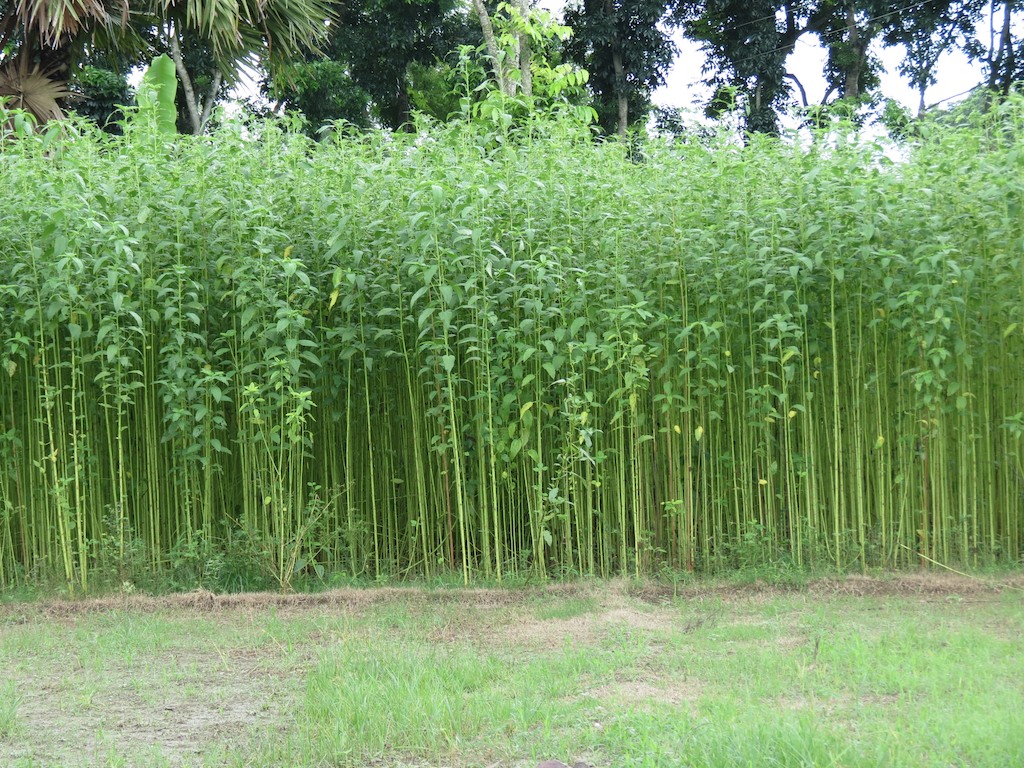Technology is one of the essential driving components to economic growth at all levels. The recent advances in nanoscience and nanotechnology intend new and innovative applications in almost every aspect of life. At present, several groups around the globe are investing extensively in nanotechnology and considering it a powerful tool for the next industrial revolution. Nanotechnology harnesses the potential of the combination of physics, chemistry, material science, biotechnology, and engineering to create atomic-scale materials with a more significant number of exposed atoms on the surface.
However, the success of nanotechnology partially depends on the source/precursor of nanomaterials or support of nanomaterials in terms of availability, renewability, functional groups, contamination-free, and biodegradability, etc. These create more opportunities and prospects for Jute as an excellent precursor for the development of nanotechnology.
Jute as a source of Nanotechnology
Jute is a type of Tiliaceae bast fiber and has a scientific name as Corchorus Capsularis since it is taken from corchor plants. Jute is one of the low-cost natural fibers and is now the most productive bast fiber. The main chemical composition of jute fibers and sticks, which have a trace amount of ash content, are cellulose, hemicellulose, and lignin, making Jute an ideal candidate for utilization in nanotechnology.
Jute is an important natural fiber crop in the South Asian Zone next to cotton. It contributed robustly to countries’ economies; it was considered the “Golden Fiber.” Yet, the use of jute fibers has decreased because of the wide accessibility of long-lasting and fashionable synthetic fiber products in the market. Consequently, the scientists were drawn by the availability of vast amounts of unused, cheap, and environmental-friendly jute fibers and sticks for their utilization in nanotechnology. Its easy and endless availability also attracts Jute at a relatively low price.
Recent developments of Nanotechnology via Jute
A group of experts, headed by Dr. Md. Abdul Aziz of King Fahd University of Petroleum & Minerals, Saudi Arabia, published a personal account entitled “Present Status and Future Prospects of Jute in Nanotechnology: A Review” (DOI: https://doi.org/10.1002/tcr.202100135) in a well-reputed journal (The Chemical Record; Quantile Rank: Q1 and Impact Factor: 6.77) of the Wiley publishing group. To cover a broader area of nanotechnology in an authentic way, the authors were selected from different research areas and are highly qualified in research and working in the leading world-class universities. They provided well-defined proofs of why Jute needs to be applied in nanotechnology with notable examples and prospects.

They described the latest developments and future aspects of Jute in nanotechnology, including the preparation and applications of jute-derived nano-cellulose, as a scaffolder for other nanomaterials, catalysis, carbon preparation, life sciences, coatings, polymers, energy storage, drug delivery, fertilizer delivery, electrochemistry, reductant and stabilizer, petroleum industry, paper industry, polymeric nanocomposites, sensors, coatings, and electronics.
These prospects will serve as a precursor of Jute-based nanotechnology research and industry setup in the future. The utilization of Jute (high cellulose-based biomass) in the nanomaterials area could bring prosperity and economic advantages, especially from an environmental perspective. The researchers aim to find out the economic and environmental benefits of Jute and highlighted various future aspects of Jute in nanotechnology.
Applications
Jute sticks derived carbon materials also played a vital role as electrode materials for electrochemical energy storage applications and showed better results than the commercially available activated carbon. (Shah et al., Jute Sticks Derived and Commercially Available Activated Carbons for Symmetric Supercapacitors with Bio‐electrolyte: A Comparative Study, Synthetic Metals, 277, 2021, 116765).
The Jute-derived carbon-based supercapacitor delivered a higher specific capacitance (150 F/g) than the commercially available activated carbon-based supercapacitor (29 F/g). The developed supercapacitor illustrates an energy density of 20 Wh/kg at a power density of 500 W/kg with fabulous performance after 10,000 charges/discharge cycles. The research findings confirmed that the Jute bio-waste shows promise as an energy storage material.
The utilization of Jute (high cellulose-based biomass) in the nanomaterials area could bring prosperity and economic advantages, especially from an environmental perspective.
There are two primary purposes of using Jute bio-waste in developing supercapacitors, i.e., it assists with waste disposal, i.e., utilizing waste to prepare energy storage materials and provides an economic platform for the sustainability of energy storage technology.
The group members also summarized the Jute-derived carbon’s various preparation and utilization strategies (Aziz et al., Preparation and Utilization of Jute-Derived Carbon: A Short Review, The Chemical Record, 20, 2020, 1074-1098). Therefore, considering the technological, environmental, economic, and social contributions of Jute, it can be stated that Jute has a significant contribution in achieving sustainable developments. Therefore, increasing the productivity and benefits of Jute through promising input cost-saving technologies is a prime concern. It is very beneficial for farmers to focus on the cultivation of Jute and contribute to the recent technological developments.
Reference: “Present Status and Future Prospects of Jute in Nanotechnology: A Review” (DOI: https://doi.org/10.1002/tcr.202100135) in a well-reputed journal (The Chemical Record; Quantile Rank: Q1 and Impact Factor: 6.77)
Also, Read https://scientiamag.org/beating-the-odds-a-journey-from-buleda-to-cambridge/

Syed Shaheen Shah is a Ph.D. student at the Physics Department, King Fahd University of Petroleum & amp; Minerals, Saudi Arabia. His research interests focus on the development and mechanistic investigation of advanced nanomaterials for energy harvesting and storage applications, such as supercapacitors, electrochemical water splitting, and electrochemical sensors.

